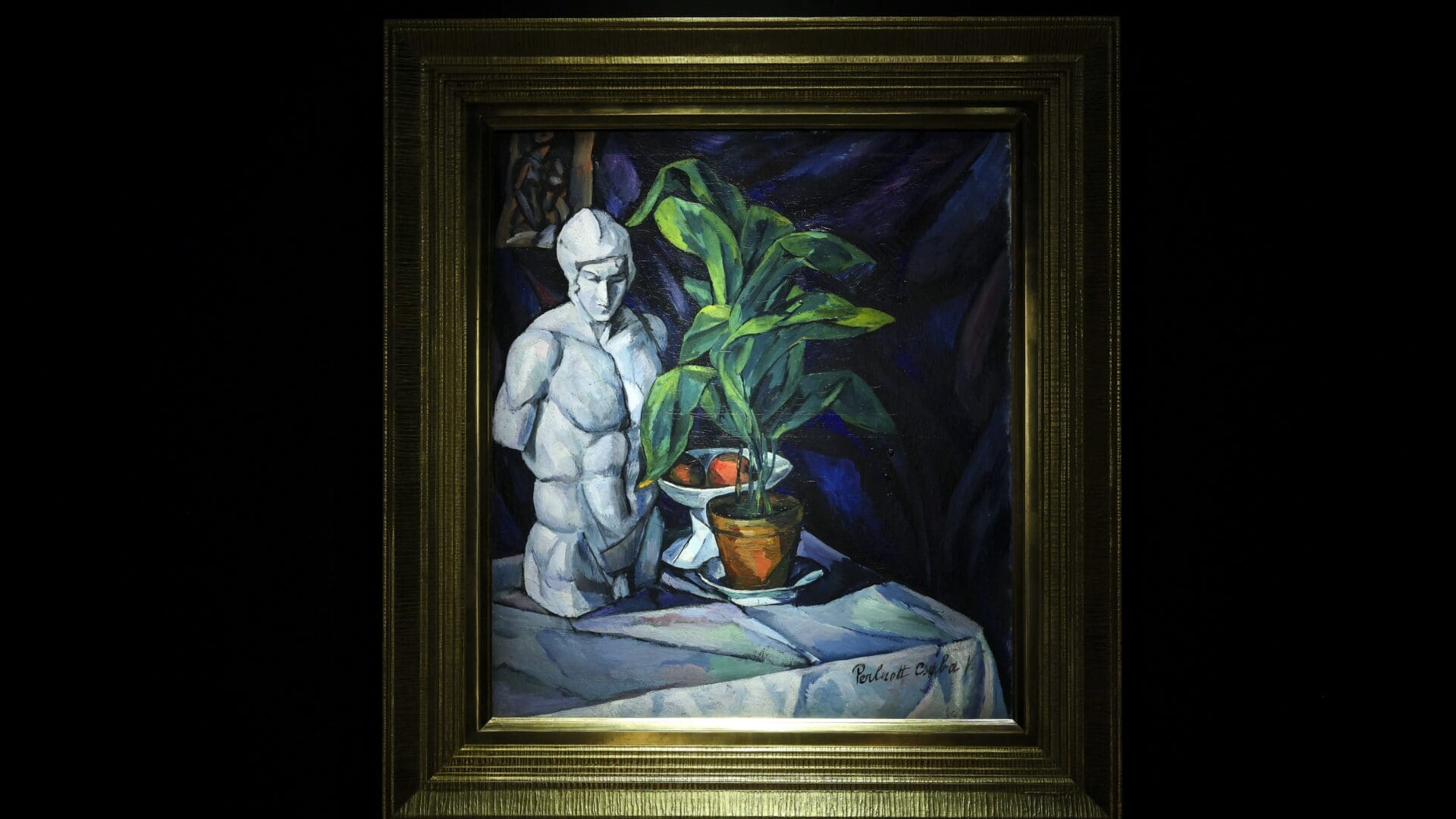One of Csaba Vilmos Perlrott’s compositions, Still Life with Matisse Painting and Statue created around 1912, found a new owner at an auction held on 10 October in Budapest, Hungary with a bid of 115 million forints, as reported by the Kieselbach Gallery on Wednesday.
According to the statement, this artwork, which evokes the spirit of the Paris School, Cézanne’s blues, the antique sculptures of the Louvre, and Henri Matisse’s nude painting, is one of the most beautiful still lives in modern Hungarian painting.
The announcement recalled that the nude painting in the upper left corner of the still life is the Matisse code, a secret symbol that only connoisseurs of Matisse’s Fauvist art could decode. This symbol, alongside a reproduced Black and Gold Nude, considered a ‘bible’ by young Parisian artists, was included in Perlrott’s composition as a homage to his master, following the rules of the golden ratio.
Deciphering the Matisse code was the key factor that elevated the painting to a price level exceeding 100 million forints, as stated in the document.
Among the outstanding masterpieces of modern Hungarian painting, there was Dezső Orbán’s Little Nude from 1910. The painting, which was sold for 34 million forints, depicts the renowned Western writer and industrial artist, Orbán, along with his Budapest studio mate and lover, Anna Lesznai.
The more than a century-old artist took the painting with him to his new home in Australia when he emigrated in 1939. Recently, Hungarian audiences could see the painting at the exhibitions Magyar Vadak and Nyolcak. The document also mentioned that the Hungarian National Bank acquired the companion piece, ‘Big Nude,’ featuring the also-nude Lesznai.
A similarly modernist nude by Józsa Járitz set a lifetime record at the auction: the 1916 painting titled Lying Female Nude was sold for 12 million forints. It also set a lifetime record for one of Margit Gráber’s portraits.
Hugó Scheiber’s World War I self-portrait with a military hat was sold for 16 million forints.
One of the popular artworks in the auction was János Vaszary’s Pompadour, a composition from around 1926, which surpassed its starting bid significantly, reaching a final bid of 48 million forints.
Géza Vörös’s portrait wearing a bowler hat, reminiscent of Magritte, also set a lifetime record, selling for 40 million forints. Among the most valuable pieces of his oeuvre was Béla Kontuly’s masterwork from the Roman school, the museum-quality Girl in a Striped Blouse from the 1930s, as mentioned in the statement.
From the post-1945 works, Ilona Keserü’s artwork Labyrinth, created in the early 2000s, changed hands at almost three times its starting bid, amid intense bidding.
Among Hungarian artworks returning from abroad, Károly Fredric, a Hungarian-born painter representing abstract expressionism in New York, went for a final bid of 14 million forints for his non-figurative work at the autumn auction.
Related articles:
Source: Hungarian Conservative/Kieselbach Gallery/MTI







